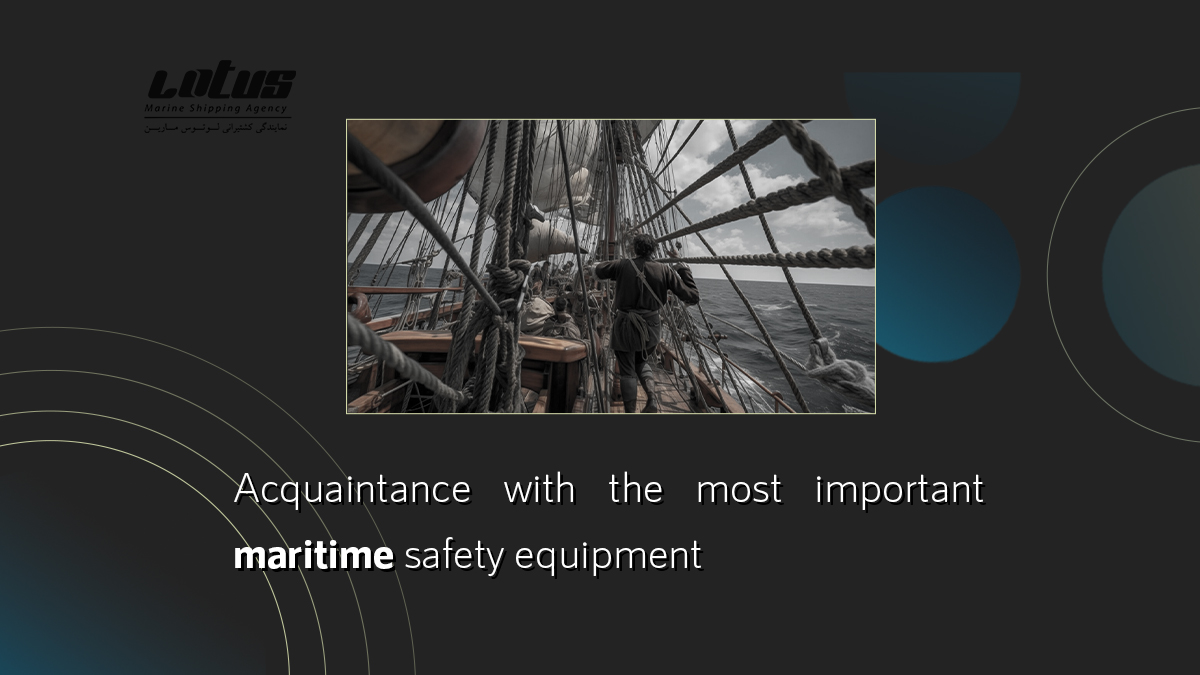Introduction to Maritime Safety
Safety at sea is paramount. The vast expanse of the ocean and the inherent dangers it presents make it imperative for seafarers to be well-acquainted with essential safety equipment. In this article, we delve deep into the most crucial maritime safety equipment, ensuring you have a comprehensive understanding of each item’s significance and use.
The Significance of Safety on the Seas
The sea is unpredictable, and even the most experienced sailors can find themselves in perilous situations. Maritime safety equipment acts as a lifeline, ensuring the protection of lives and property.
A Brief History of Maritime Safety Equipment
The history of maritime safety equipment dates back centuries, evolving from rudimentary life vests to sophisticated devices. This evolution reflects our growing understanding of the sea and the development of technology to combat its dangers.
Essential Maritime Safety Equipment
Navigating through treacherous waters necessitates being well-equipped. Here, we outline the most vital maritime safety equipment.
Life Jackets and Personal Flotation Devices
A fundamental component of maritime safety, life jackets, and personal flotation devices (PFDs) are designed to keep an individual afloat in the event of an emergency. They come in various sizes and styles, catering to different needs and situations.
Life Rafts and Lifeboats
In the event of a ship abandonment, life rafts and lifeboats provide a secure and buoyant space for survivors. Regular maintenance and drills ensure they are always ready for deployment.
Fire Extinguishers and Fire Suppression Systems
Fire poses a significant threat at sea. Having the appropriate fire extinguishers and suppression systems on board is crucial for quickly addressing and mitigating fire hazards.
Visual and Audible Signaling Devices
In case of emergency, visual and audible signaling devices such as flares, smoke signals, and horns play a critical role in alerting nearby vessels and rescue teams.
Emergency Position Indicating Radio Beacons (EPIRBs)
EPIRBs are vital for long-distance voyages, transmitting a distress signal and location to rescue teams, ensuring timely assistance.
Maintenance and Proper Use
Properly maintaining and using maritime safety equipment is just as important as having it on board.
Regular Inspections and Maintenance
Conducting regular inspections and maintenance ensures that all equipment is in optimal condition and ready for use when needed.
Training and Drills
Frequent training and drills reinforce the proper use of safety equipment, preparing the crew for real-life emergencies.
The Role of the Crew in Ensuring Safety
A well-trained and vigilant crew is fundamental to maritime safety. Their knowledge and attentiveness play a vital role in preventing and responding to emergencies.
The Future of Maritime Safety Equipment
As technology advances, so does maritime safety equipment, offering greater protection and efficiency.
Technological Advancements and Innovations
From smart life jackets to advanced navigation systems, the future of maritime safety equipment is bright, with continuous innovations enhancing safety at sea.
The Importance of Continuous Learning and Adaptation
Embracing new technologies and methods is crucial for maintaining the highest safety standards and ensuring the well-being of all on board.
Conclusion
Maritime safety equipment is an indispensable part of sea navigation, providing essential protection in times of need. From life jackets to EPIRBs, each piece of equipment plays a critical role in ensuring the safety of crew and passengers alike. As we look to the future, continuous learning and adaptation will drive advancements in maritime safety equipment, further safeguarding lives at sea.
FAQs
- What is the most important piece of maritime safety equipment?
- It’s challenging to pinpoint a single piece of equipment as the most important since various tools serve different critical functions. However, life jackets and personal flotation devices (PFDs) are often considered among the most crucial, as they directly contribute to keeping individuals afloat and alive in emergencies.
- How often should maritime safety equipment be inspected and maintained?
- The frequency of inspections and maintenance for maritime safety equipment can vary based on the type of equipment and regulatory requirements. Generally, it’s recommended to conduct thorough checks before every voyage and perform regular maintenance as specified by the equipment manufacturers and maritime safety authorities. This ensures all equipment is in optimal condition and ready for immediate use.
- What role does the crew play in maintaining maritime safety?
- The crew plays a vital role in maintaining maritime safety. They are responsible for conducting regular inspections and maintenance of safety equipment, participating in safety drills and training, and remaining vigilant to respond promptly in emergencies. A well-trained and attentive crew is essential in preventing incidents and ensuring the effective use of safety equipment.
- How has maritime safety equipment evolved over the years?
- Over the years, maritime safety equipment has undergone significant advancements, evolving from basic flotation aids to sophisticated devices and systems. Innovations in materials, design, and technology have led to more effective, reliable, and user-friendly safety equipment, enhancing the overall safety of maritime operations.
- What are some emerging technologies in maritime safety equipment?
- Emerging technologies in maritime safety equipment include smart life jackets with integrated location tracking and signaling capabilities, advanced fire suppression systems using eco-friendly agents, and improved visual and audible signaling devices with longer ranges and durations. Additionally, there are developments in navigation and communication tools, enhancing the ability to prevent incidents and coordinate rescue operations.

